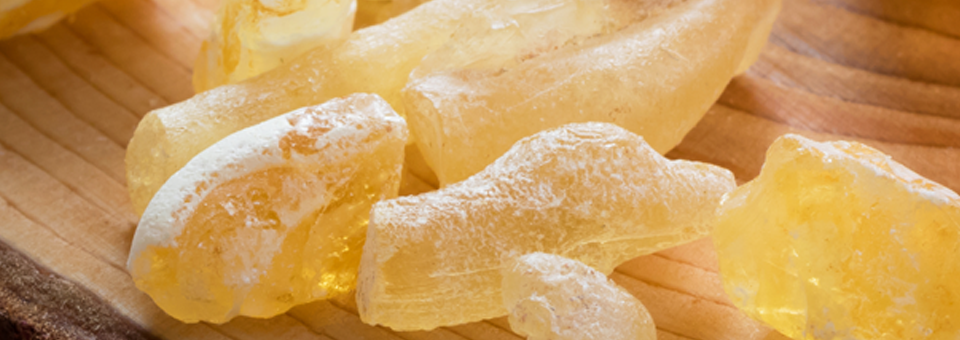Frankincense is a life-saving treatment that gets to the root cause of almost every chronic disease of our times – inflammation.
Inflammation is your body’s attempt to heal itself. But too much causes disease. In fact, most of the chronic ailments associated with aging are essentially inflammatory diseases. That includes cancer, heart disease, arthritis, arteriosclerosis, Alzheimer’s and diabetes.
Inflammation is so closely linked to these age-related diseases that it is commonly called “inflamm-aging.”
It describes what happens to all of us as we get older. Every time inflammation turns on, your genes produce molecules known as cytokines. Cytokines are used by your immune system cells to signal each other about threats. They order white blood cells to the scene.
When you’re young, cytokines only increase when there’s an infection or injury. But over a lifetime, your body accumulates so many you’re almost drowning in them.
These cytokines cause cellular damage which causes more inflammation. It’s a cycle that keeps repeating itself.
Eventually, you start to develop unmistakable signs of aging. Those high levels of cytokines are linked to frailty and loss of muscle mass as well as Alzheimer’s disease.1
They’re also directly linked to fatal heart attacks. In one study, high concentrations of cytokines in the bloodstream were the strongest predictor of death.2 And for many years, it has been known that cancer is linked to long-term inflammation.3 For instance, inflammation has been shown to be a critical key to the development of breast cancer.4
But new research shows the boswellic acids in frankincense battles inflammation. In one study, 52 rugby players had acute inflammation. They were given either a placebo or frankincense. After four weeks those taking Boswellia had a significant reduction in inflammation.5
Boswellia works in many different ways.
It contains enzymes that block PGe2. This hormone-like chemical
is produced in response to an injury. It makes blood vessels dilate and expand. This causes the injured area to become swollen and painful. By attacking PGe2, frankincense stops inflammation before it starts.Boswellic acids in frankincense are also potent inhibitors of 5-lipoxygenase (5-LOX). This is an enzyme responsible for inflammation. Knocking out 5-LOX enzymes helps prevent inflammation and pain.
Look for a Boswellia serrata supplement standardized to at least 65% boswellic acids. I recommend taking 400 mg three times a day.
Frankincense is also available as an essential oil. You can place a drop or two under your tongue. Or dilute a drop in a glass of water or a teaspoon of honey.
2 more ways to fight the fires of inflammation
Here are two more ways to target and extinguish inflammation.
- Fight the fire with fat. Omega-3 fatty acids are rich in two of the most powerful inflammation fighting compounds – resolvins and protectins. Groundbreaking studies show these components drastically reduce the levels of cytokines that lead to chronic inflammation and even cancer.6 Other studies show people who supplement with fatty acids containing at least two grams of EPA and DHA per day produce fewer cytokines.7
I recommend you get at least 1 gram of omega-3 every day, with 600 mg from DHA and 400 mg from EPA. The best sources come from pure calamari and squid oils. - Shut down your inflammation command center. Curcumin remains one of the most powerful anti-inflammatories ever discovered. It targets your body’s inflammation command center – a molecule called nuclear factor-kappa B (NF-κB). NF-κB is the switch that activates more than 400 pro-inflammatory genes in your body. NF-κB can cause you to produce COX-2 and iNOS, two enzymes present in inflammation. So if you inhibit NF-κB, you can maintain a healthy inflammatory response.
You can always cook with fresh turmeric root. Or you can supplement. But be sure your supplement contains piperine, a black pepper that increases absorbency. I recommend 1,000 mg a day.
You can always supplement. Look for one made from the inner bark of the plant. Take 500 mg a day.
To Your Good Health,

Al Sears, MD, CNS
1. Michaud M. “Proinflammatory cytokines, aging, and age-related diseases.” J Am Med Dir Assoc. 2013;14(12):877-882.
2. Rauchhaus M, et al. “Plasma cytokine parameters and mortality in patients with chronic heart failure.” 2Circulation. 2 2000;102(25):3060-3067.
3. Rakoff-Nahoum, S. “Why cancer and inflammation?” 2Yale J Biol Med. 2 2007;79(3-4):123-130.
4. Liu M, et al. “The canonical NF-κB pathway governs mammary tumorigenesis in transgenic mice and tumor stem cell expansion.” 2Cancer Res. 2 2010;70;10464. Epub 2009 Apr 6.
5. Franceschi F, et al. “A novel lecithin based delivery form of Boswellic acids (Casperome®) for the management of osteo-muscular pain: a registry study in young rugby players.” 2Eur Rev Med Pharmacol Sci. 2 2016;20(19):4156-4161.
6. Kang JX and Weylandt KH, “Modulation of inflammatory cytokines by omega-3 fatty acids.” 2Subcell Biochem. 2 2008;49:133-143.
7. Endres S, et al. “The effect of dietary supplementation with n−3 polyunsaturated fatty acids on the synthesis of interleukin-1 and tumor necrosis factor by mononuclear cells.” 2N Engl J Med. 2 1989;320:265–271

